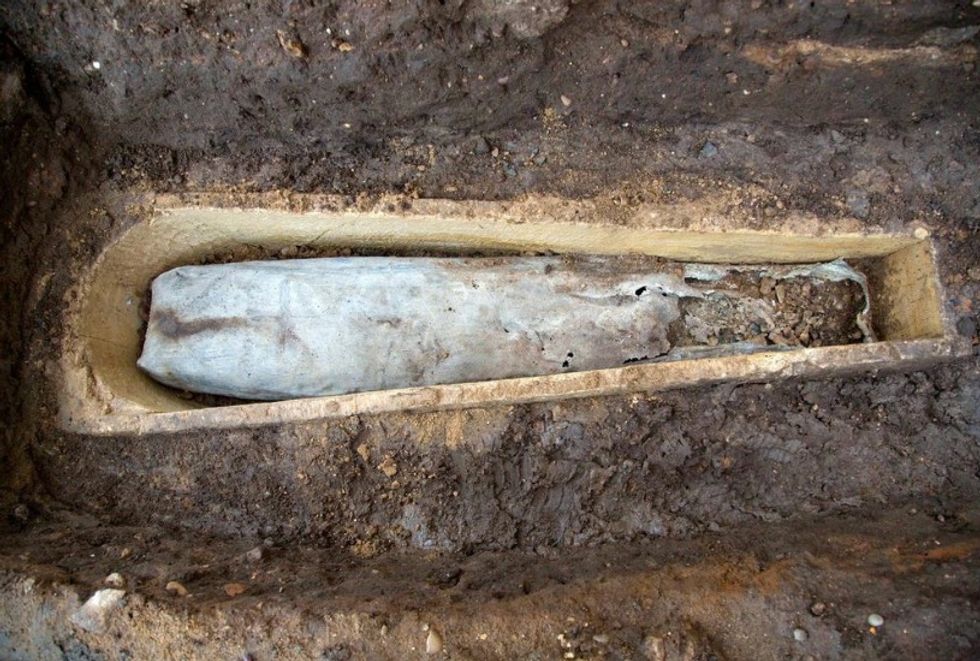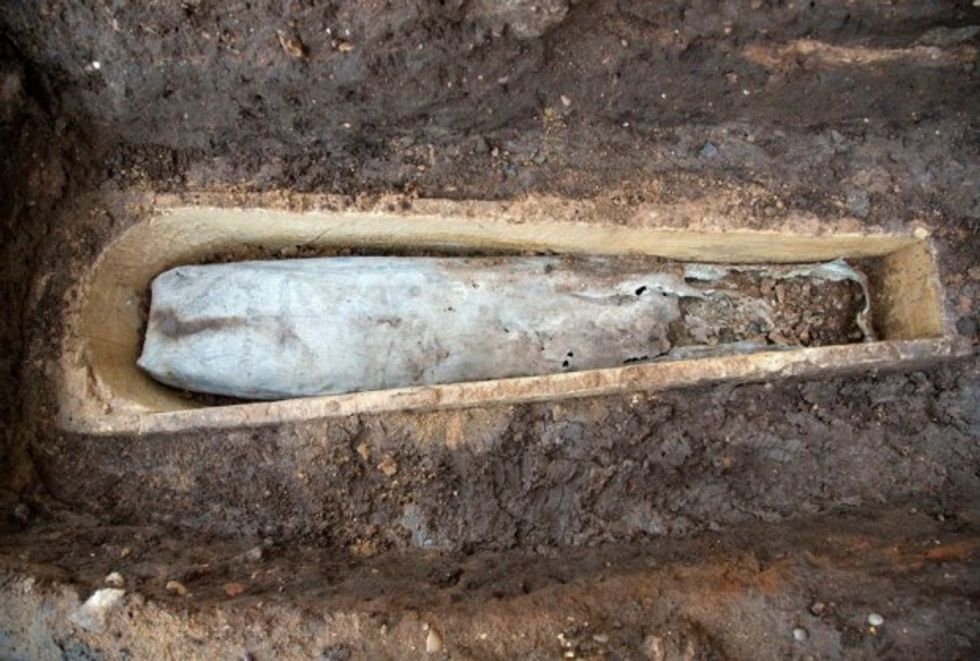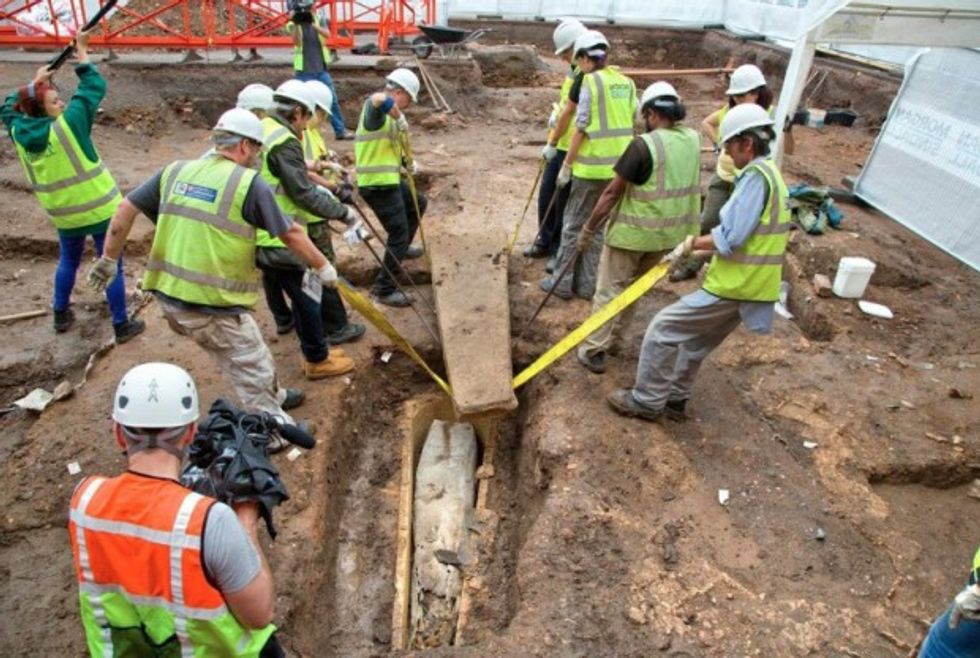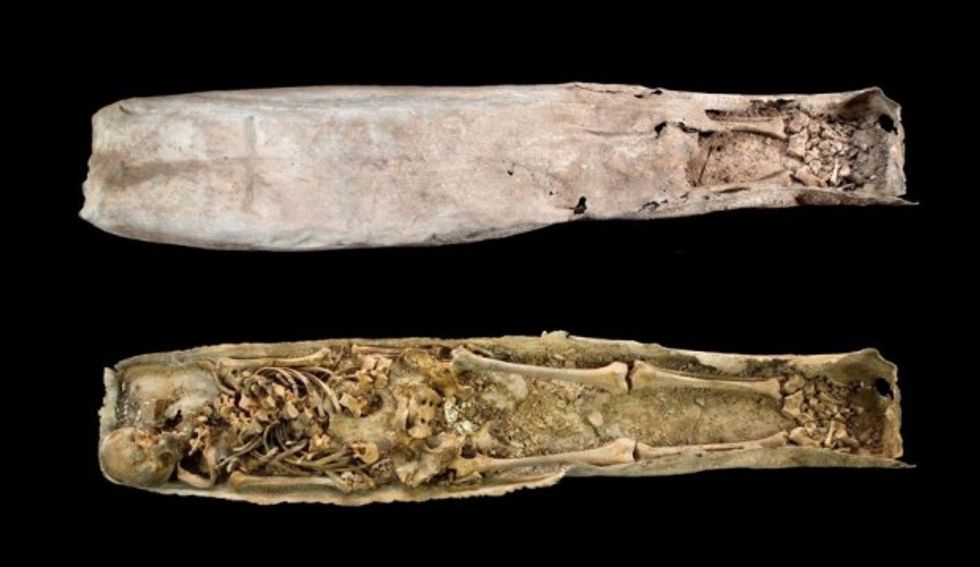
The lead coffin containing and elderly woman was one of 10 found at the Greys Friars dig in Leicester near where King Richard III was also found buried. (Image source: University of Leicester)

History buffs were thrilled when the body of King Richard III was found underneath a Leicester parking lot a few years ago, and the historical artifacts from that region continue to emerge.
Most recently the University of Leicester, which is leading the research on the remains found at Grey Friars friary, reported the discovery of a lead coffin containing the remains of an elderly woman.

The coffin, discovered near the site where Richard III was buried, was found inside a limestone sarcophagus during a second excavation in August 2013 and was just recently opened. Researchers believe the woman inside the coffin might have been a benefactor of the church.
In total, 10 graves were found at the site, in addition to that of Richard III. Six of the graves were not disturbed, but the other ones were determined to hold the remains of women.

“Although it might seem unusual that Richard III is the only male skeleton found inside the Grey Friars church, the other four skeletons all being female, it must be remembered that we have only excavated five of 10 identified graves in the church’s chancel with the potential for hundreds more burials elsewhere inside the church, the other friary buildings and outside in the cemetery," site director Mathew Morris said in a statement.
"What stands out more is the contrast between the care and attention taken with these burials – large, neatly dug graves with coffins – and the crudeness of Richard III’s grave. The more we examine it, the clearer it becomes how atypical Richard III’s burial really was," Morris added.
Watch the opening of the coffin:
The discovery of this and other graves, Morris said, provide "important new insights into the lives of the people of medieval Leicester."
From analysis conducted on the skeletons, the researchers believe they died between 1270 and 1400. The researchers could also tell that one woman was forced to walk with a crutch due to a congenital hip dislocation and another had a life of physically hard labor.
"Analysis of Skeleton 4 shows that she had a life of hard physical work, frequently using her arms and legs to lift and support weight," Morris said. "It is interesting then that she is buried in an area of the church which would have typically been reserved for wealthy benefactors and people of elevated social status.
"Her presence in this area might suggest that the friary’s main source of donations came from the town’s middle-classes, merchants and tradespeople who were probably of more modest means, and worked for a living.”

The team has culled through historical records and through it cannot definitively identify any of the women, it found one of particular interest. In 1290, the bishop granted an indulgence for 20 years off time in purgatory for a woman named Emma.
"A Pater and a Ave for the soul of Emma, wife of John of Holt, whose body is buried in the Franciscan church in Leicester," the indulgence from the Bishop of Lincoln stated, according to the university news release.
"We know little about her and a lack of fundamental information, such as her age at death, what she did for a living, what she looked like or where in the church she was buried, coupled with no known descendants who can provide a DNA sample, make it impossible to say for certain whether one of these skeletons is that of Emma, or indeed anyone else," Morris said. "Sadly, they will forever remain anonymous."
Richard III will be reinterred at Leicester Cathedral on March 22.